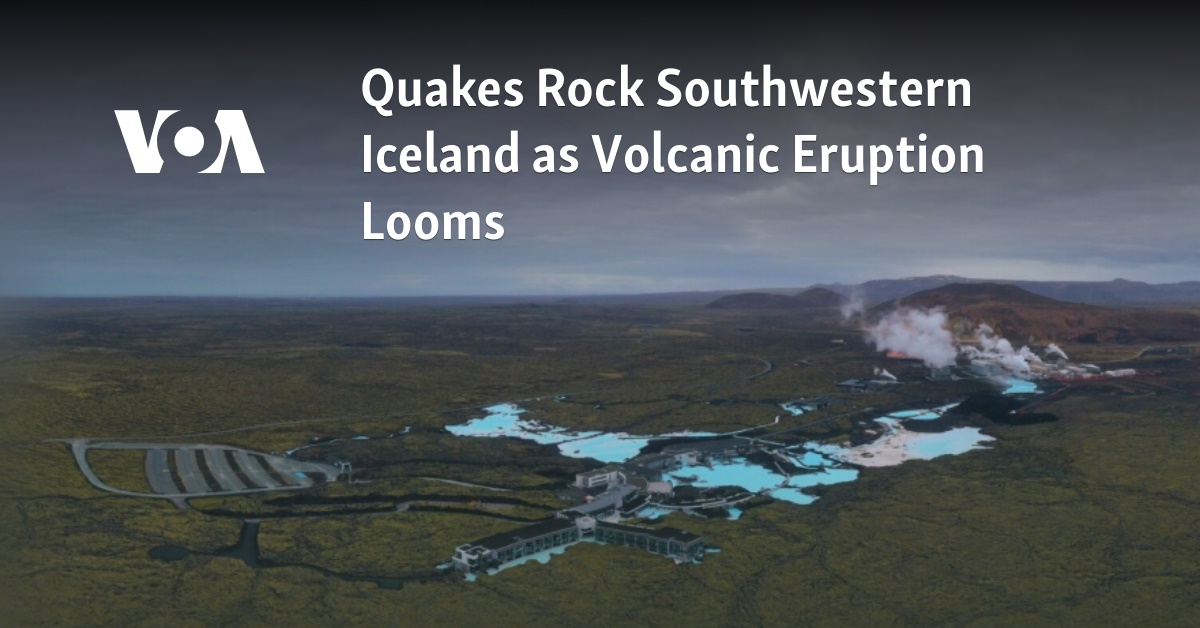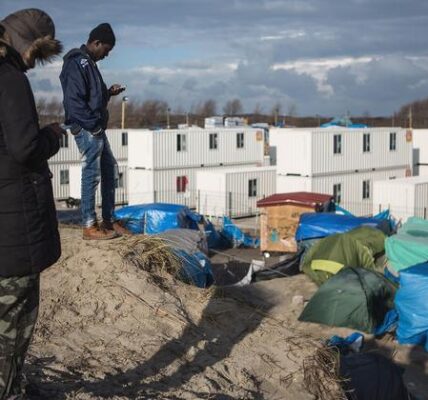There are earthquakes occurring in southwestern Iceland as a volcanic eruption is expected.
 Reykjavik, Iceland —
Reykjavik, Iceland —
On Friday, Iceland announced a state of emergency due to a series of strong earthquakes occurring in the southwestern Reykjanes peninsula. This could potentially lead to a volcanic eruption.
The Department of Civil Protection and Emergency Management reported that the National Police Chief has announced a state of emergency for civil defense in response to a severe earthquake at Sundhnjukagigar, located north of Grindavik.
The administration cautioned that earthquakes could potentially increase in magnitude and this sequence of occurrences may result in an eruption.
According to the Icelandic Met Office (IMO), a volcanic eruption may occur “within a few days.”
Grindavik, a small town with a population of approximately 4,000, is situated about 3 kilometers (1.86 miles) southwest of the location where the recent earthquake swarm occurred on Friday.
The organization has established procedures for evacuating in the event of a volcanic eruption.
Thousands of tremors since October
At approximately 1730 GMT, two powerful earthquakes were experienced in areas as distant as the capital city of Reykjavik, which is about 40 kilometers away. The tremors were also felt along most of the southern coast of the country, causing windows and household items to shake.
Based on early data from IMO, the largest earthquake measured 5.2 on the Richter scale and occurred north of Grindavik.
On Friday, the police shut down a road going from north to south to Grindavik due to damage caused by the tremors.
Around 24,000 earthquakes have been recorded on the peninsula since late October, according to the IMO. A “dense swarm” of almost 800 tremors were recorded between midnight and 1400 GMT on Friday.
According to the IMO, there is a buildup of molten rock below ground at a depth of approximately five kilometers (3.1 miles). If it begins to move towards the surface, it has the potential to cause a volcanic eruption.
According to the statement, it is more probable that the magma will take multiple days, not hours, to reach the surface. If a crack were to open where there is currently the most seismic activity, the lava would flow towards the southeast and west, but not towards Grindavik.
However, the Civil Protection Department stated that it would dispatch the patrol vessel Thor to Grindavik “as a precaution for safety reasons.”
On Friday, emergency shelters and assistance centers were scheduled to open in Grindavik and three other locations in southern Iceland. These facilities aim to provide information and aid for individuals who are displaced.
As a precautionary measure, the Blue Lagoon, a well-known tourist spot near Grindavik known for its hot springs and high-end accommodations, closed on Thursday due to another series of earthquakes.
The Svartsengi geothermal plant, located nearby, supplies electricity and water to 30,000 people living on the Reykjanes peninsula.
The plant has established emergency measures in case of a volcanic eruption to safeguard both the facility and its employees.
In 2021, the Reykjanes peninsula has experienced three eruptions occurring in March 2021, August 2022, and July 2023.
The three were situated in remote areas, away from any developed structures or inhabited regions.
, or
The duration of a cycle can vary from decades to centuries.
Iceland boasts the highest number of active volcanic systems in Europe, with a total of 33.
The island located in the North Atlantic sits on top of the Mid-Atlantic Ridge, a fissure in the bottom of the sea that divides the Eurasian and North American tectonic plates.
Before the volcanic eruption in March 2021 in an unpopulated region near Mount Fagradalsfjall, the Reykjanes volcanic system had been inactive for 800 years.
Volcanologists predict that the upcoming phase of heightened activity could persist for multiple decades or even centuries.
In April 2010, a large eruption occurred at a different volcano in Iceland called Eyjafjallajokull, located in the southern part of the island. This event resulted in the cancellation of approximately 100,000 flights and left over 10 million travelers unable to continue their journeys.
Source: voanews.com




